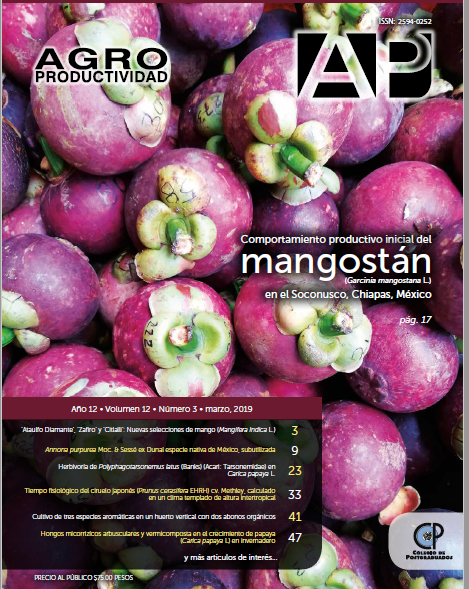Cultivation of three aromatic species in a vertical garden with two organic fertilizers
Main Article Content
Keywords
Basil, oregano, chive, vermicompost, bocashi.
Abstract
Objective: It was analysed the establishment of purple basil (Ocimum basilicum var. purpurascens L. Benth.), oregano (Origanum vulgare L.) and chive (Allium schoenoprasum L.), in a vertical production system, using vermicompost (T1) and bocashi (T2) as organic fertilizers.
Design / methodology / approach: Two treatments (organic bocashi and vermicompost fertilizers) and one control (forest soil) were applied to plant cultures. For this, three walls were installed, each with a different substrate and with five individual plants per species. After, an Analysis of Variance was applied for the height and fresh aerial biomass and the means were compared by a Tukey test (p ? 0.05). Also, a Principal Components Analysis was carried out to evaluate the correlation between the nutrient concentration in each substrate and in aerial biomass of the plant species.
Results: The basil was functional in the vertical production system, where the highest productivity was obtained using bocashi fertilizer; likewise, chives were fitted for the vertical production system, growing better with vermicompost fertilizer than with the other treatments.
Limitations of the study / implications: Oregano was not fitted for the proposed vertical system because its root needs more soil volume, so oregano culture is not recommended for this production model.
Findings / conclusions: The organic culture of basil and chives can be fitted to the vertical production system. Results showed that basil had high biomass production using an organic fertilizer rich in nitrogen and calcium (bocashi), while chive had it using a fertilizer rich in phosphorus (vermicompost).

